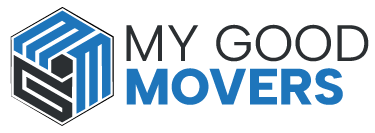Buying a home is like getting a tattoo—you think you know what you want, but then you're hit with the reality of how much it actually costs.
Let’s talk about the elephant in the room. Buying a home sounds like the dream, but when you actually get into the nitty-gritty of financing your new home and planning the move, it can feel like you're getting hit with a pile of bills.
If you are first-time buyers, you’ve probably Googled something like “how to finance a new home without selling my soul” more than once.
And it’s no joke. Did you know that nearly 50% of homebuyers in the U.S. say they had no idea how much they would actually need to pay for their down payment, closing costs, and all the extra fees?
It's like walking into a restaurant and realizing your "affordable" meal is suddenly a five-star dinner bill. It's easy to get overwhelmed by all the numbers, mortgage options, and the moving chaos that follows.
But don’t freak out just yet!
If you’re smart about it and take the time to really understand your options, you’ll be cruising into that new home with confidence.
Whether it’s considering a VA Construction Loan to save some serious cash or learning the ropes of conventional loans, let’s discuss everything you need to know on how to finance your new home and have a solid moving plan.
Step 1: Understand Your Financing Options
Before you get too deep into the excitement of house-hunting, it’s crucial to understand your financing options.
Financing a home typically involves a mortgage, but there are various types of loans that can fit your situation.
Let’s break down some of the common options:
Conventional Loans
These are the most common types of home loans. Conventional loans usually require a down payment of at least 3% to 20%. The interest rates on these loans vary based on your credit score and the lender, but they tend to be more competitive than government-backed loans.
FHA Loans
The Federal Housing Administration (FHA) insures loans made by approved lenders. These loans are great for buyers who don’t have a large down payment or a high credit score. With an FHA loan, you might be able to secure a mortgage with as little as 3.5% down.
VA Loans
If you are a veteran or active military member, a VA Construction Loan could be an excellent option for you. These loans are backed by the U.S. Department of Veterans Affairs and offer great benefits, such as no down payment and no private mortgage insurance (PMI). VA loans typically have lower interest rates, which makes them a very attractive option for those who qualify.
USDA Loans
If you plan to buy a home in a rural area, you may qualify for a USDA loan. These loans offer low-interest rates and often require no down payment. The U.S. Department of Agriculture backs these loans, but there are income and location requirements.
Adjustable-Rate Mortgages (ARMs)
With an ARM, your interest rate is fixed for an initial period (often 5 or 7 years), after which it adjusts periodically based on the market. These loans can be risky if you’re not careful, but they’re an option if you plan to sell or refinance before the rates adjust.
Step 2: Get Pre-approved for a Loan
Once you’ve chosen the type of loan that best suits your needs, the next step is to get pre-approved. Getting pre-approved means that a lender has reviewed your financial background and determined how much you can afford to borrow.
This step clearly shows you your budget and helps you avoid wasting time looking at homes that are outside your price range.
It’s also essential when you make an offer on a home. Sellers are more likely to take your offer seriously if they know you’re already pre-approved.

Fun Fact: According to a report from the National Association of Realtors, 75% of home buyers find pre-approval crucial in their home-buying decisions.
Step 3: Factor in Additional Costs
While securing a loan and purchasing the home is a major financial commitment, it’s important to remember that buying a house isn’t just about the down payment.
You’ll need to factor in other expenses, including:
Closing Costs: These can range from 2% to 5% of the home’s purchase price. Closing costs include fees for the appraisal, home inspection, loan origination, and title insurance.
Home Insurance: You’ll need homeowner’s insurance to protect your property. Make sure to shop around to find the best rates.
Property Taxes: Depending on where you live, property taxes can vary significantly. Make sure to factor this into your monthly budget.
Maintenance and Repairs: A new home will need maintenance, whether it’s replacing a leaky roof or re-caulking the bathroom. Make sure to set aside a portion of your budget for ongoing maintenance.
Step 4: Start House Hunting
Now that you’re financially prepared, it’s time to start house hunting! It’s easy to get caught up in the excitement of finding your dream home, but try to stay practical.
Consider the following when searching for the perfect house:
Location: The location of the home will have a major impact on your lifestyle. Is it close to work, schools, and shopping? Are there parks or amenities nearby?
Size and Layout: Think about your family’s needs. How many bedrooms do you need? Do you need a home office or a large kitchen for entertaining?
Condition: If you’re looking at older homes, be prepared for potential repairs. You’ll want to hire a home inspector to check for structural issues, mold, and other potential problems.
Why You Can Trust My Good Movers
550+
moving companies
listed
16,000+
customer reviews to help you decide
50+
states covered for moving services
100%
free quotes provided instantly
Step 5: Plan Your Move
After securing your financing and finding your dream home, it’s time to plan your move. Moving can be one of the most stressful aspects of buying a home, but with proper planning, you can make it much easier.
Here’s how to break it down:
Set a Timeline
Start planning your move as soon as possible, ideally as soon as you sign the contract on your new home. Consider your move-out date and when you want to move into your new home.
Budget for Moving Expenses
Just like buying a house, moving comes with costs. Whether you’re hiring a professional moving company or renting a truck, make sure to account for these expenses in your budget.
On average moving costs can range from $300 to $1,500, depending on the distance and size of the move.
Declutter and Organize
One of the best ways to reduce the stress of moving is to declutter. Before packing, go through each room and get rid of anything you don’t need. This will not only make the packing process easier but also save you money on moving costs.
Hire Professional Movers or Rent a Truck
Decide whether you want to hire professional movers or rent a truck and handle the move yourself. Professional movers can be a bit pricey, but they save you time and energy. If you decide to do it yourself, be sure to enlist help from friends and family.
Pack Smart
When it comes to packing start early. Begin with non-essential items like seasonal clothing and decor. As you get closer to the moving date, pack up your daily-use items.
Use sturdy boxes and label each one with its contents and the room in which it belongs. This will make unpacking much easier.
Consider Temporary Storage
If there’s a gap between your move-out and move-in dates, you may need temporary storage. Renting a storage unit can help you keep your belongings safe and organized while you wait to get settled into your new place.
Step 6: Finalize Your Move and Settle In
If you’ve planned ahead, your move will go much more smoothly. Here are a few final tips:
Do a Walkthrough: Before leaving your old home, do a final walkthrough to ensure everything is packed and you haven’t missed anything.
Take Care of Utilities: Be sure to transfer or set up your utilities before moving into your new home. This includes electricity, water, internet, and gas.
Unpack and Organize: Take your time unpacking and organizing your new home. It’s tempting to rush, but give yourself grace and don’t overwhelm yourself.
Final Thoughts
Financing your new home and planning your move might seem like stressful tasks, but with proper planning and preparation, they don't have to be.
By understanding your financing options, getting pre-approved, budgeting for additional costs, and organizing your move, you can make the home-buying experience a lot more manageable.
If you're eligible, remember to look into programs like the VA Construction Loan, which can make the process even easier for veterans and military families.
Recommended Resources






























 (239) 799–6077
(239) 799–6077